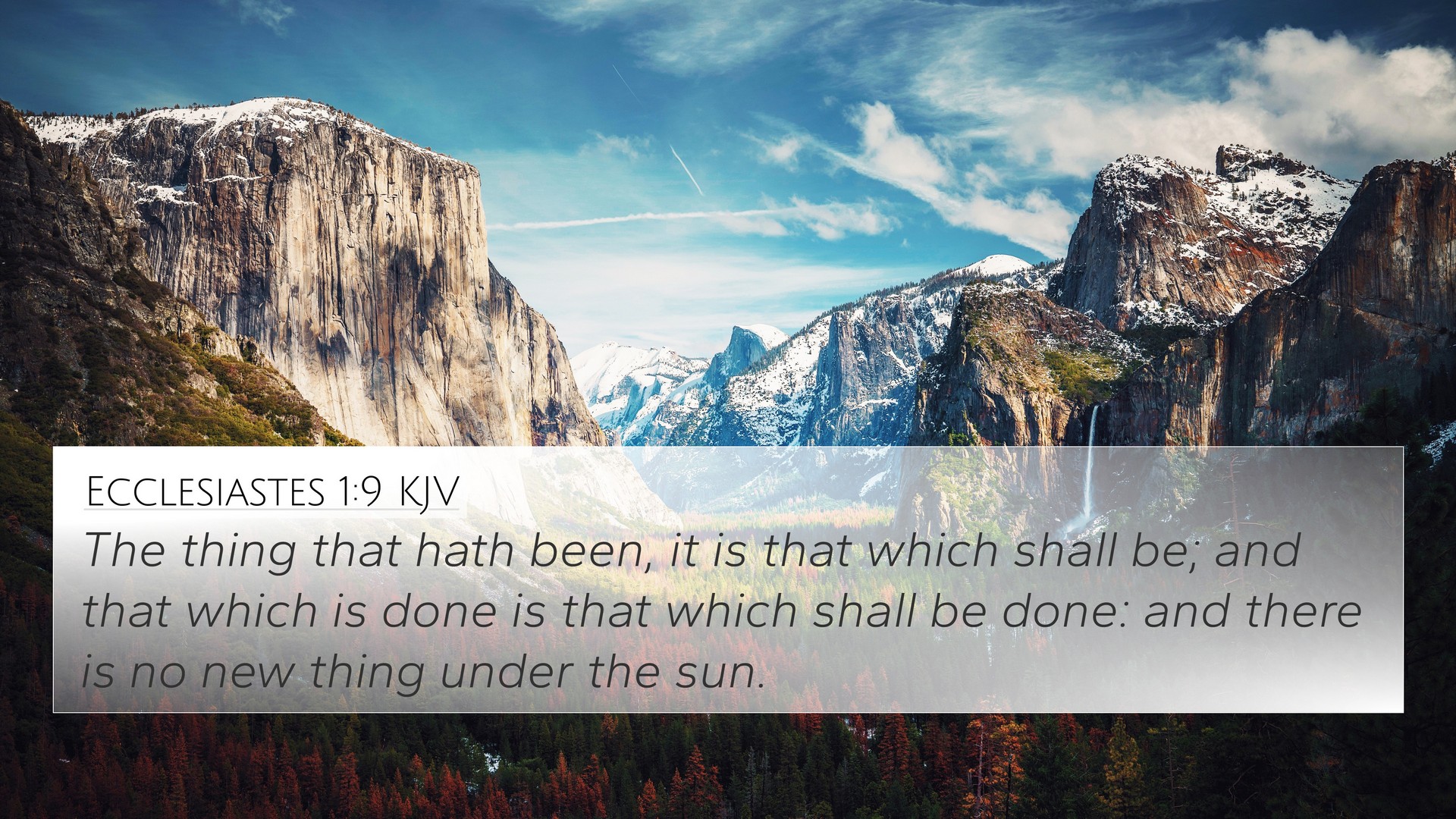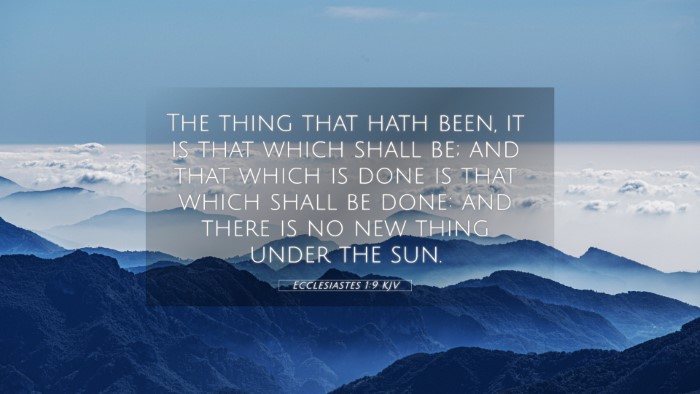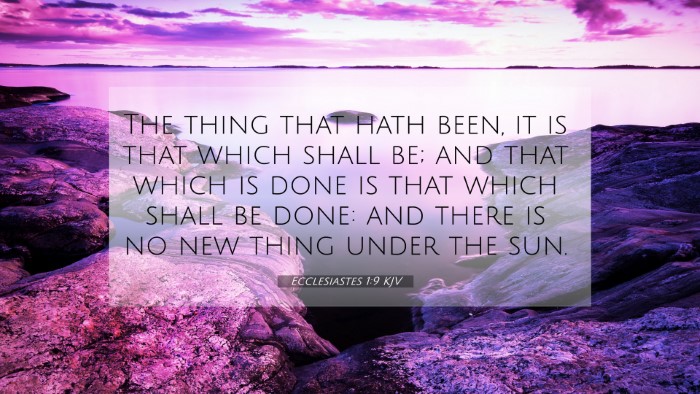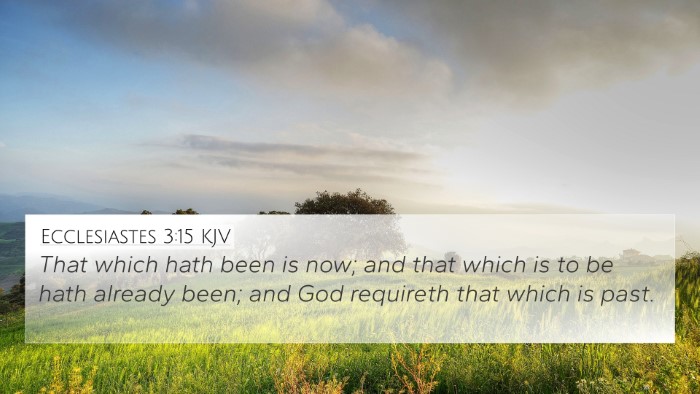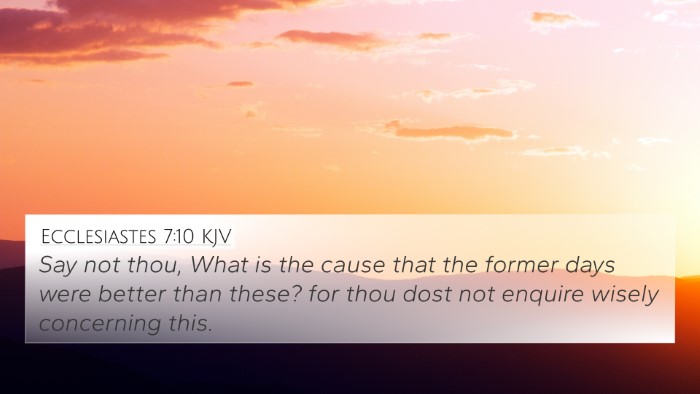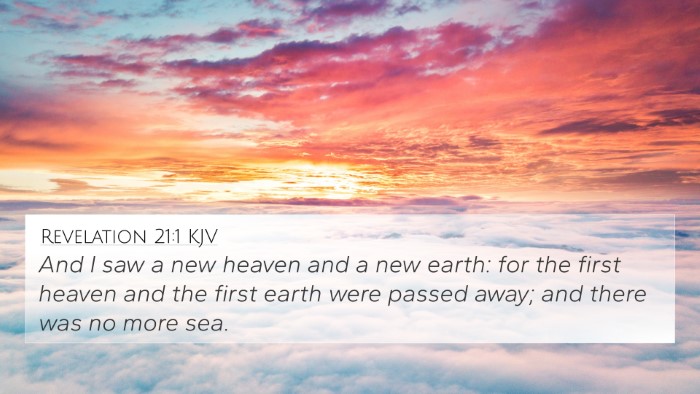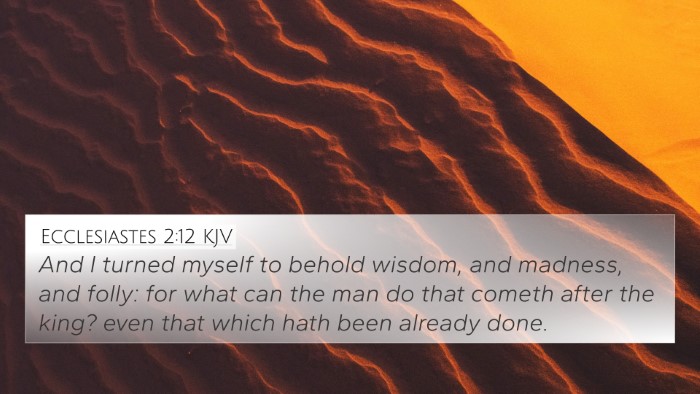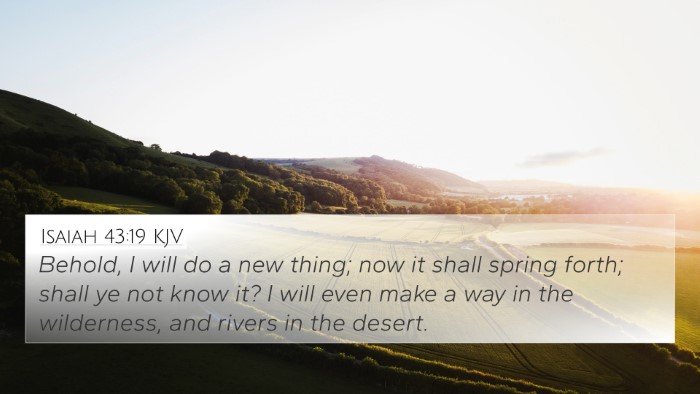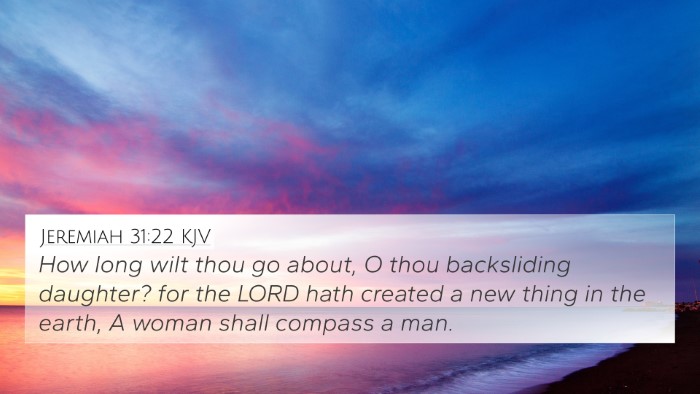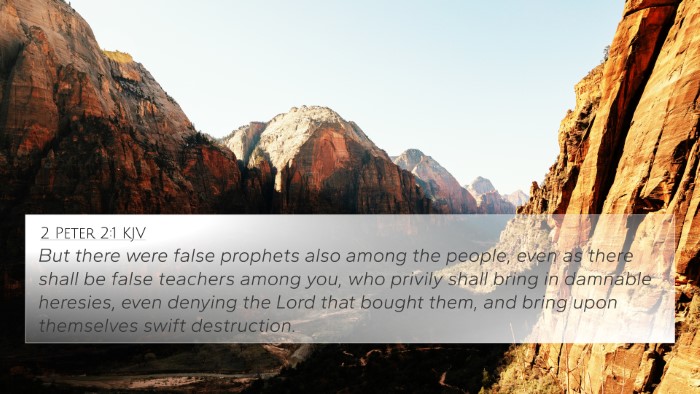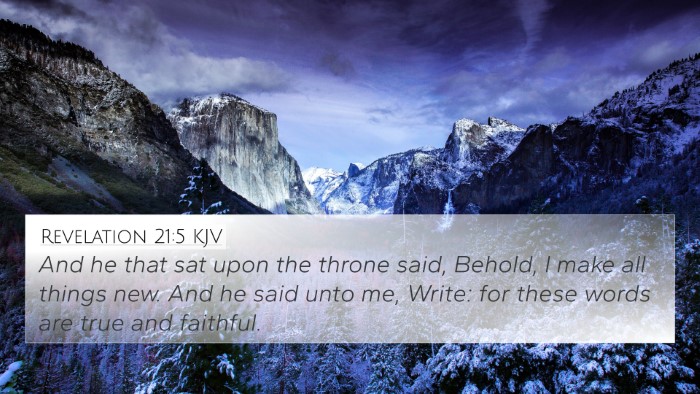Understanding Ecclesiastes 1:9
Ecclesiastes 1:9 states: "What has been is what will be, and what has been done is what will be done; there is nothing new under the sun." This verse captures the cyclical nature of human experience and the seemingly repetitive events in life.
Summary of Ecclesiastes 1:9
This verse serves as a profound reminder of the limitations of human innovation and the continuity of life’s patterns. The author, traditionally believed to be Solomon, examines the futility of human endeavors when viewed in the eternal scope of time.
Key Insights from Commentaries
-
Matthew Henry:
Henry emphasizes the vanity of the world’s pursuits, noting that humans often strive for novelty, yet all that is new is merely a repackaging of the old. This observation serves to humble human pride and ambition.
-
Albert Barnes:
Barnes reflects on the inevitability of history repeating itself, suggesting that humanity often fails to learn from past mistakes. This cyclical nature can lead to despair but also offers a critical lens through which to view life’s endeavors.
-
Adam Clarke:
Clarke posits that while humans frame actions as innovative, they are merely variations of what has existed before. He argues that this not only applies to human actions but to moral and spiritual lessons as well.
Bible Verse Cross-References
To gain a deeper understanding of Ecclesiastes 1:9, we can examine several Bible verses that resonate with its themes:
- Isaiah 40:6-8: Highlights the transient nature of human life and its accomplishments.
- Psalm 102:26-27: Speaks of the permanence of God in contrast to the fading nature of creation.
- Hebrews 13:8: Affirms that Jesus Christ is the same yesterday, today, and forever, indicating the consistency of God amidst change.
- James 1:17: Describes how every good gift comes from above, suggesting divine stability in an ever-changing world.
- Romans 8:20-21: Discusses the futility of creation due to human sin but promises hope for eventual renewal.
- Acts 14:17: Reminds us of God’s constant presence and an unchanging creative plan.
- Revelation 21:1-4: Offers a vision of a new creation that fulfills the promise of renewed hope amid futility.
Thematic Bible Verse Connections
Ecclesiastes 1:9 opens up discussions about the nature of existence, purpose, and divine providence:
- Understanding how God’s eternal nature contrasts with the temporary pursuits of mankind.
- Recognizing the lessons from history and the importance of learning from past experiences.
- Exploring the relationship between hopelessness in human efforts and the hope found in divine intervention.
- Examining the cyclical patterns in nature and human behavior in light of scriptural narratives.
Comparative Bible Verse Analysis
To effectively utilize this verse in study, cross-referencing allows us to connect themes across scriptures:
- Ecclesiastes 3:15: Discusses how the past is present again, linking it back to the concept of nothing new under the sun.
- Jeremiah 16:19: The enduring nature of God remains while human efforts and nations rise and fall.
- 1 Peter 1:24-25: Compares human life to grass, emphasizing its temporary form and the lasting word of God.
Practical Applications
Understanding Ecclesiastes 1:9 provides valuable insights for daily living:
- Embrace humility in one’s accomplishments, recognizing their temporal nature.
- Seek meaningful engagements with God, who remains constant amidst changes.
- Encourage reflection on historical actions to foster wisdom in future decisions.
Conclusion
Ecclesiastes 1:9 serves as a sobering reminder of the cyclical nature of life. Its integration with other scriptures allows for a robust understanding of change, consistency, and the pursuit of meaning in human endeavors. Through thematic connections and comparative analysis, we not only understand this verse better but also see its implications for life, faith, and history.
